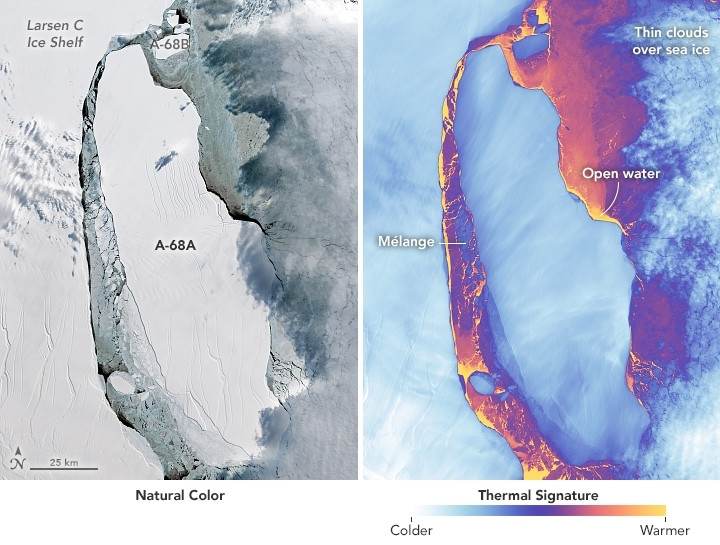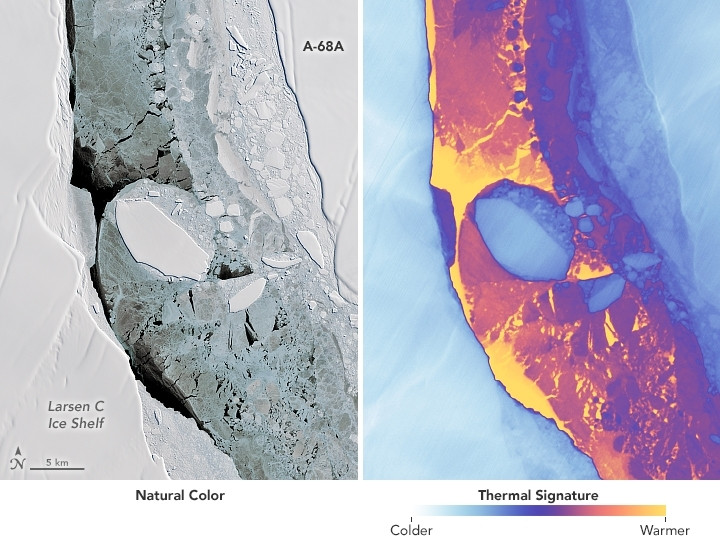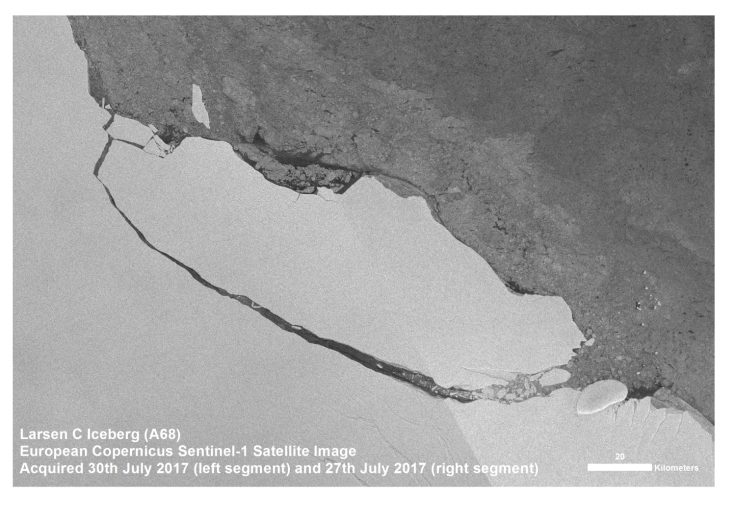Antarctica: Nasa releases more pics of the trillion tonne iceberg that broke off Larsen C Ice Shelf
Since the break happened in July, Nasa had to rely solely on thermal images and radar-based data to observe the break and watch the motion of ice.
Nasa's Earth Observatory has released more images of the Larsen C Ice Shelf which was reported to have lost an iceberg four times the size of Manhattan into the sea last month.
As Antarctica's 2017 polar night (polar phenomenon where nights last over 24 hours) comes to an end, the space agency has released clear images showing the size and extent of the damage. Nasa reports that since the break happened in July, they have had to rely solely on thermal images and radar-based data to observe the break and watch the motion of ice.
The iceberg was named A-68 and by August, the first sunlit images were being captured, says the report. Between 11 and 16 September, more wide view images were captured by Nasa's Terra satellite using its onboard Moderate Resolution Imaging Spectroradiometer (MODIS) and Landsat 8's Operational Land Imager (OLI) and the Thermal Infrared Sensor (TIRS).
The sets of images show the icebergs in natural colour as well as in thermal imaging. The rifts between the iceberg and the shelf are clearly visible. The thermal images show the points where the cold shelf ice ends and the warmer ice on the water begins. The report points out that thermal imaging also shows where exactly the thick ice and relatively thinner ice are on the shelf, iceberg, and sea.

The report says that over the past few weeks of observation scientists have found that the gap between the iceberg and the ice shelf has widened as the winds, currents, and tides are working constantly to move the iceberg into the sea. This widening comes after an initial back and forth movement suggesting that the iceberg might bump back into Larson C ice shelf.
Back and forth collisions caused the main iceberg to break off into two large pieces which were named A-68A and A-68B. Other, smaller pieces that remain unnamed was also spotted in the water, some of them sharp and defined, moving north, says the report. The larger pieces have been smoothed and rounded off by wind and gravity, but small pieces are still sharp and battered by them crashing and being tossed in the water.


© Copyright IBTimes 2025. All rights reserved.





















